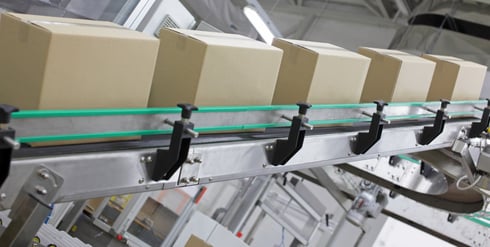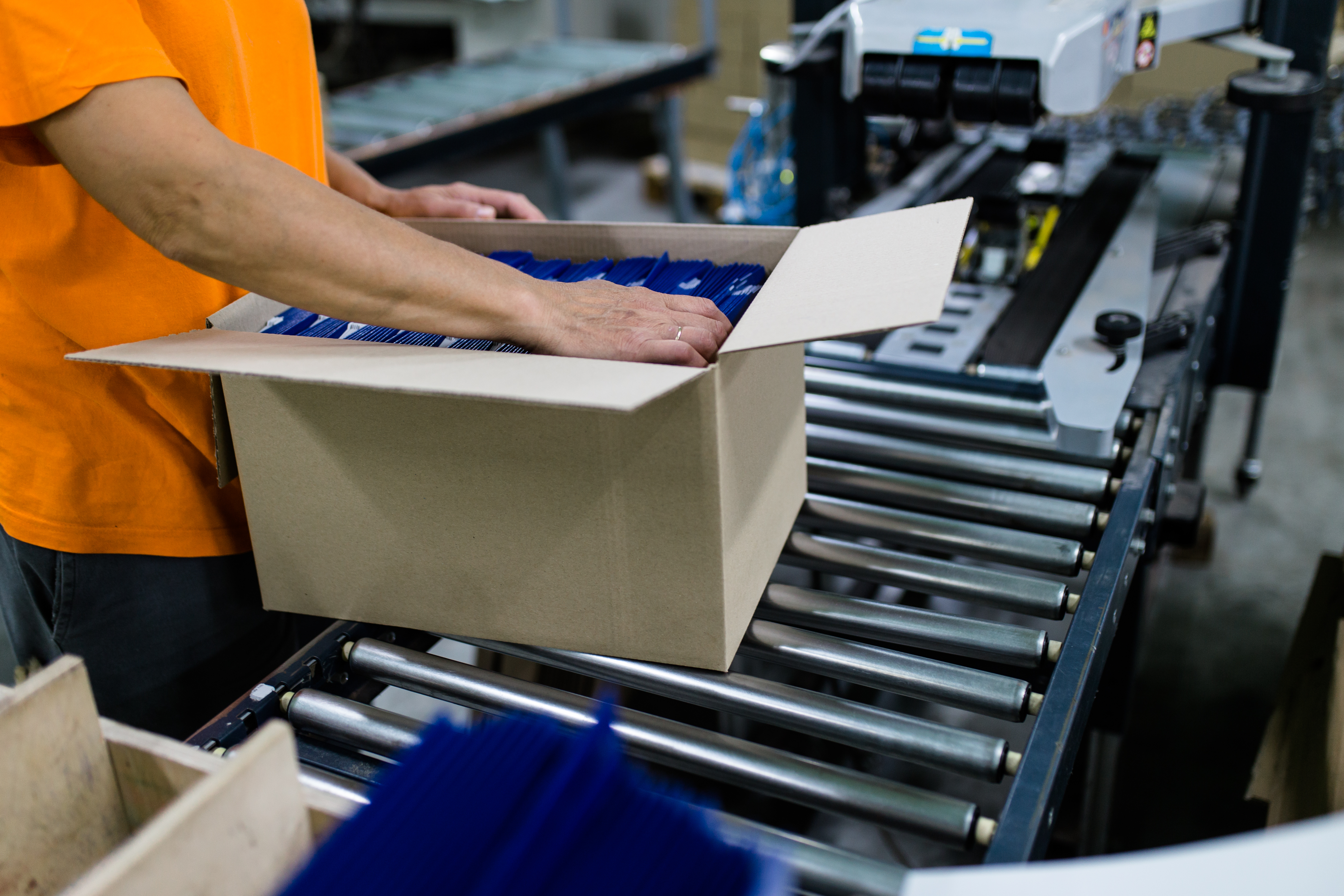In this piece, we will focus on packaging optimization in the apparel industry and how that can have a positive impact on DCs.
Apparel packaging audits can help improve DC efficiencies
Global apparel brands might ship products from Southeast Asia factories to DCs in the EU, Britain, the U.S., or other countries. Distribution center requirements vary by location. Designing apparel transport cartons that concurrently meet the needs of all DCs can be quite challenging.
Sources of DC packaging variability include:
- Pallet sizes: Standard pallet sizes vary from country to country. Packaging optimization for one brand may require developing multiple optimized solutions to match palletization needs that vary by region.
- Stacking needs: Cartons need to have sufficient structural integrity to support the weight of all of the cartons stacked on top of them. Without knowing whether a carton will be located at the bottom of a stack or at the top of a stack, each carton must be strong enough to support the load that a carton at the bottom of a stack will bear.
- Racking needs: Each DC has its own configuration of racks. Cartons must be appropriately sized and labeled so they can fit as intended into the racking system.
- Transport carton labeling needs: Carton liners frequently have barcodes printed on them that enable scanners to track the journey of the carton. Other labeling may be printed on the carton that also identifies what is contained within the carton. Cartons need to arrive with their labeling intact so automated equipment at the DC as well as DC personnel can efficiently route the carton within the DC.
- Optimization of available space: Floor space is at a premium at DCs. Careful planning is required to maximize available storage capacity and to also allow sufficient floor space for processing inbound and outbound. Brands frequently use third-party logistic DCs and pay per area used. Optimization of space will not only make the flow better but it will also save brands money on payments to third-party DCs.

This is an example of an underpacked carton. The volume of the carton remains consistent. A carton that is fully packed and a carton that is underpacked take up the same amount of space in a DC. Fully packing a carton optimizes available space in the DC.
Uncovering hidden space
An apparel packaging audit can examine all of these aspects within a DC to discover opportunities for improvement that will enhance the overall efficiency of the DC. One example of opportunities to increase efficiencies at the DC, that can be revealed by a packaging audit, is finding “hidden space availability.”
When transport cartons are not packed to their fullest capacity, some carton space may contain only air. The volume of a carton – whether packed fully or underpacked with empty headspace – takes up the same amount of space on DC racks. Helping brands develop procedures to fully pack each carton will increase product capacity at the DC. This is just one of many benefits that an apparel packaging audit can provide.
Perforated apparel cartons help prevent damage, injuries
DCs have established infrastructures that may have evolved over many years to accommodate a variety of industries and products. Their layout, traffic patterns, and racking systems may be well established. Altering any of this existing infrastructure may require a substantial investment.
Brands may ship their apparel from a Southeast Asia factory to a DC they own or to a third-party DC. In either case, the overall layout of the DC, including racking configurations, may be somewhat fixed. It is easier to modify transport cartons than it is to redesign a DC.
Within these fixed architectural structures, it is still possible to improve DC efficiency by optimizing apparel carton packaging. In addition to customizing carton design to work well with existing DC layouts, using perforated cartons can provide unique benefits when processing apparel orders.
Perforated cartons help prevent apparel product damage and help avoid injury to DC personnel. Opening cartons with box cutters can sometimes lead to polybag damage (for apparel that is individually wrapped) or to apparel damage. The blades of box cutters can also lead to bodily harm of DC personnel.

Perforated cartons can improve efficiency and safety in the pick and pack area of the DC, and can reduce product damage as well.
An easy access point
Perforated packaging also provides consistency in the size of the “hole” that is generated when the carton is opened via the perforated opening. The size of the opening is carefully designed to provide easy access to the products within the carton. In contrast, boxes that lack perforated access may have cut openings created by a worker’s box knife.
This ad hoc opening may be either too small (which would make accessing products difficult) or too large (which could cause products to fall out of the carton unintentionally). These ad hoc inventory access holes may also have rough edges that may be harmful to DC personnel.
Perforated cartons with uniform inventory access openings make it easier for DCs to fill pick and pack orders. Even if just a few seconds are saved on each pick and pack order, when this time saving is multiplied across thousands of orders, this time saving can result in a substantial reduction of both labor costs and average order fill time.
Designing for various levels of distribution center automation
Levels of DC automation vary from brand to brand. In some instances, levels of automation may vary within the same brand. (This may occur when one brand uses multiple DCs. Each DC may have distinct levels of automation.)
Apparel transport carton design needs to be optimized for the most rigorous environment the transport carton will endure. Highly automated environments require precision as cartons travel on conveyor belts, pass through scanners, and may even be racked using robots. Since a factory in Asia may send products to multiple DCs, understanding the downstream journey of the transport carton enables the designers to design cartons that will efficiently travel through multiple DC configurations.

Apparel transport carton sizes: Theoretical vs. actual
Prior to designing a carton, packaging engineers gather data regarding the intended use of the transport carton. This data may include:
- Identifying the type of products that will be shipped in the carton, including specification of a maximum weight for the filled transport carton
- The route the carton will travel from the factory to the DC
- The level of automation at the DC
- Whether outbound shipments from the DC are sent to retail outlets or direct to customers
Once this information is collected, packaging engineers design an “ideal" carton that has the structural integrity to withstand the rigors of the journey. This carton design will include specific dimensions for volume and corrugated board. Downstream decisions, including selecting pallets and planned racking at the DC, presume that the actual carton will conform to the theoretically designed carton.
However, there are often variations between the theoretical and actual carton size. This deviation can occur when the factory does not have sufficient quality control systems in place for their packaging vendors.
Discrepancies between theoretical package size and actual package size can cause DC inefficiencies to proliferate. DC slowdowns may be caused by:
- Transport cartons that do not fit onto designated pallets
- Transport cartons that do not load appropriately into transport vehicles. If unsecured cartons shift during transit, cartons may arrive at the DC damaged
- Structural carton damage (caused by cartons that do not conform to manufacturing specifications and that cannot withstand the stresses endured during transit) impairs efficient racking and stacking
- Liner damage that can impair visibility of carton labeling. Manual labor is needed to identify the carton contents
- Cartons that do not rack in their allotted spaces
Optimized packaging drives value
Optimizing apparel DC efficiencies can substantially reduce inventory and distribution costs. Financial savings can be achieved by designing apparel transport cartons that precisely meet the needs of each touch point in the carton’s journey through the DC, improve product access, meet automation needs, and drive compliance between theoretical carton size and actual carton size.




